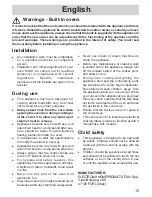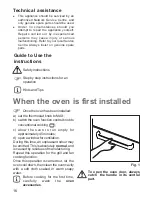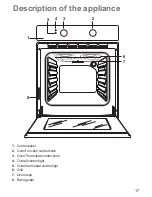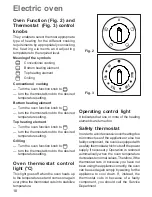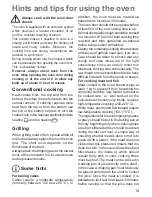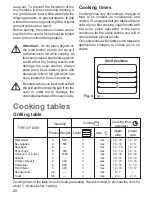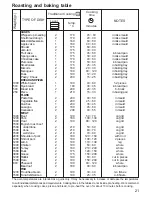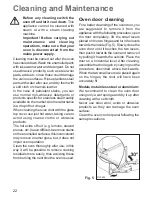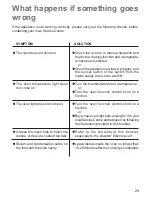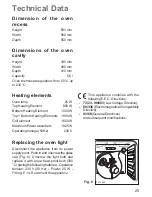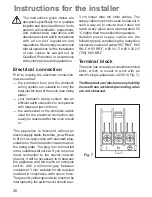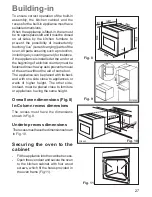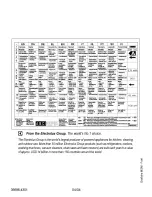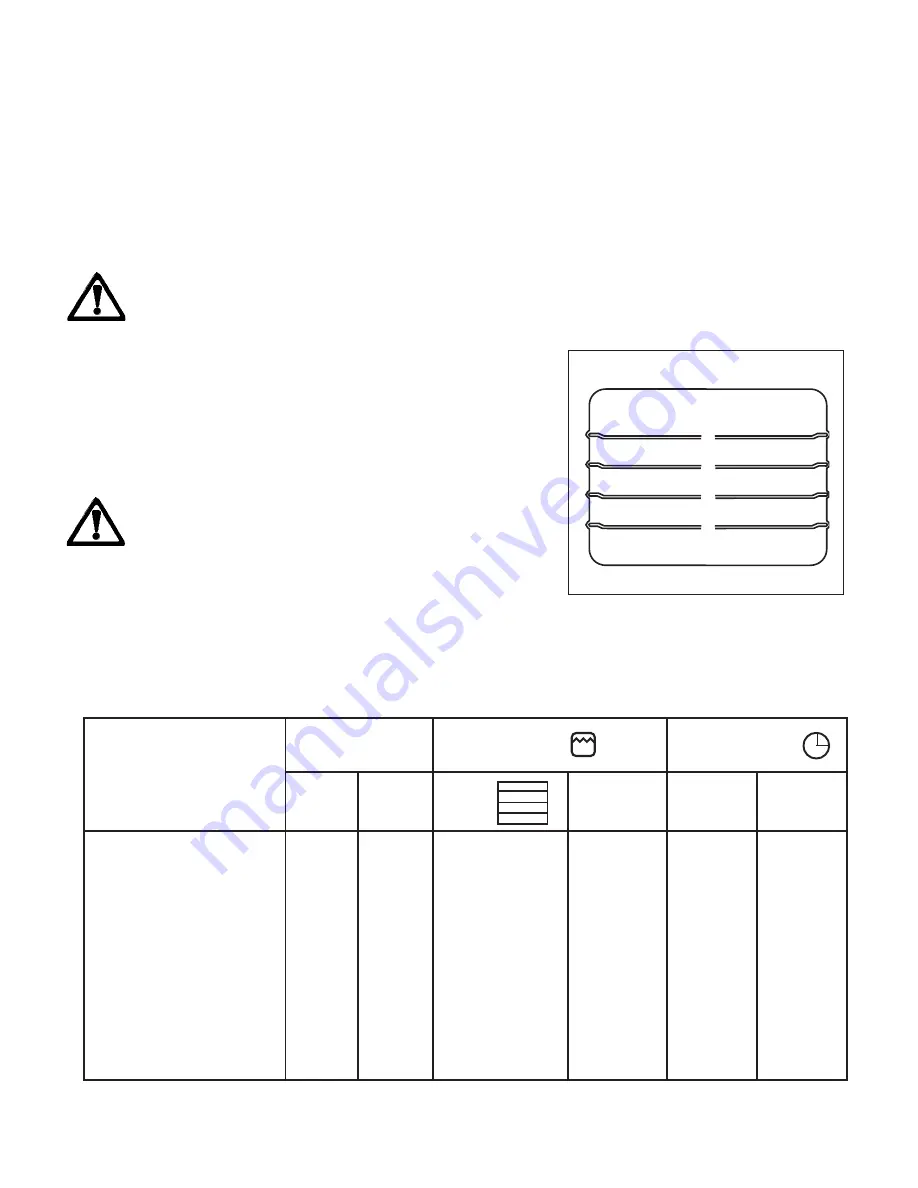
20
seep out. To prevent the formation of too
much smoke in the oven during roasting, it
is a good idea to pour a little water into the
dripping pan and—to prevent steam—to add
a little bit more during cooking if the original
amount dries up too much.
Before serving, the various courses can be
kept hot in the oven which should be turned
down to the minimum temperature.
Attention!
- Do not place objects on
the oven bottom and do not cover it
with aluminium foil while cooking, as
this could cause a heat build-up which
would affect the baking results and
damage the oven enamel. Always
place pans, heat-resisting pans and
aluminium foils on the grid which has
been inserted in the oven shelves.
Be careful when you insert and extract
the grid and the dripping pan from the
oven in order not to damage the
enamelled surfaces of the oven cavity.
4
3
2
1
FO 0019
Shelf positions
Fig. 4
Cooking times
Cooking times vary according to the type of
food to be cooked, its consistency, and
volume. We suggest that you take particular
note of your first cooking experiments with
the oven, since operating in the same
conditions for the same dishes you will of
course obtain similar results.
Only experience will enable you to make the
appropriate changes to values given on
charts.
Grilling table
Cooking times in the table do not include pre-heating. We recommend to pre-heat the oven for
about 5 minutes before cooking.
Fillet steaks
4
800
3
max
12 ~ 15
12 ~ 14
Beef-steaks
4
600
3
max
10 ~ 12
6 ~ 8
Sausages
8
—
3
max
12 ~ 15
10 ~ 12
Pork chops
4
600
3
max
12 ~ 16
12 ~ 14
Chicken (cut in two)
2
1000
3
max
30 ~ 35
25 ~ 30
Kebabs
4
—
3
max
10 ~ 15
10 ~ 12
Chicken (breast)
4
400
3
max
12 ~ 15
12 ~ 14
Hamburger
6
600
3
max
10 ~ 15
8 ~ 10
Fish (fillets)
4
400
3
max
12 ~ 14
10 ~ 12
Sandwiches
4-6
—
3
max
5 ~ 7
—
Toast
4-6
—
3
max
2~4
2 ~ 3
Upper
side
°C
temp.
Pieces Weight
Quantity
Cooking time
(minutes)
Lower
side
Grilling
TYPE OF DISH
Level
4
3
2
1
Cooking tables


